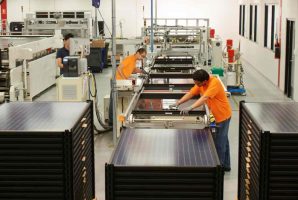The Australian Energy Market Operator (AEMO) says it expects to make an on-line simulator available early next year to help developers of wind and solar projects prepare detailed and accurate models and prepare for the connection process.
The issue around modelling – and what impact a new wind or solar farm, or even a big battery – will have on the grid has been one of the most frustrating problems for the army of renewable developers and the grid owners and operators alike.
Developers have complained about the complexity, cost and lack of access to detailed information in preparing their modelling, while networks and AEMO have been frustrated with what they say has been some variable and occasionally poor quality modelling.
The modelling has been one of the reasons – along with the lack of grid capacity – for lengthy delays in the connection and commissioning process that have seen some projects having to wait a year or more even after construction has been finished.
Some issues, like more transparency over who is proposing what in which areas, have been addressed, and AEMO says it is now moving forward on a plan to build a cloud-based resource that will allow developers to test and tune power system models for their new generation projects.
It says the connection simulation tool, effectively a “digital twin” of the National Electricity Market, will be partly funded by the Australian Renewable Energy Agency’s Advancing Renewables Program, and will help reduce risks, costs and time for connection approvals.
CEO Daniel Westerman says AEMO has connected 121 new projects in the past four years and there are some 97 gigawatts – includes 46GW of wind, 33GW of solar and 10GW of hydro – of project proposals in the pipeline.
“Our energy sector continues to move through its most extensive transformation in a century, leading the world in the uptake of renewable generation on a per capita basis,” Westerman said in a statement.
“The connections simulator will give developers the option to utilise the wide-area power system information used by AEMO for the first time to evaluate their project models quickly and efficiently. This will help enable new generation and storage capacity into the power system.”
Westerman said many wind and solar projects are located in weak parts of the grid, prone to poor system strength and thermal and capacity limits. This is presenting technical complexities, when combined with regulatory and project-specific issues, and is contributing to delayed connections. It requires strong modelling.
Testing will begin this month on a working prototype, with a staged rollout of the connection simulator expected at the end of 2021 and into 2022.










